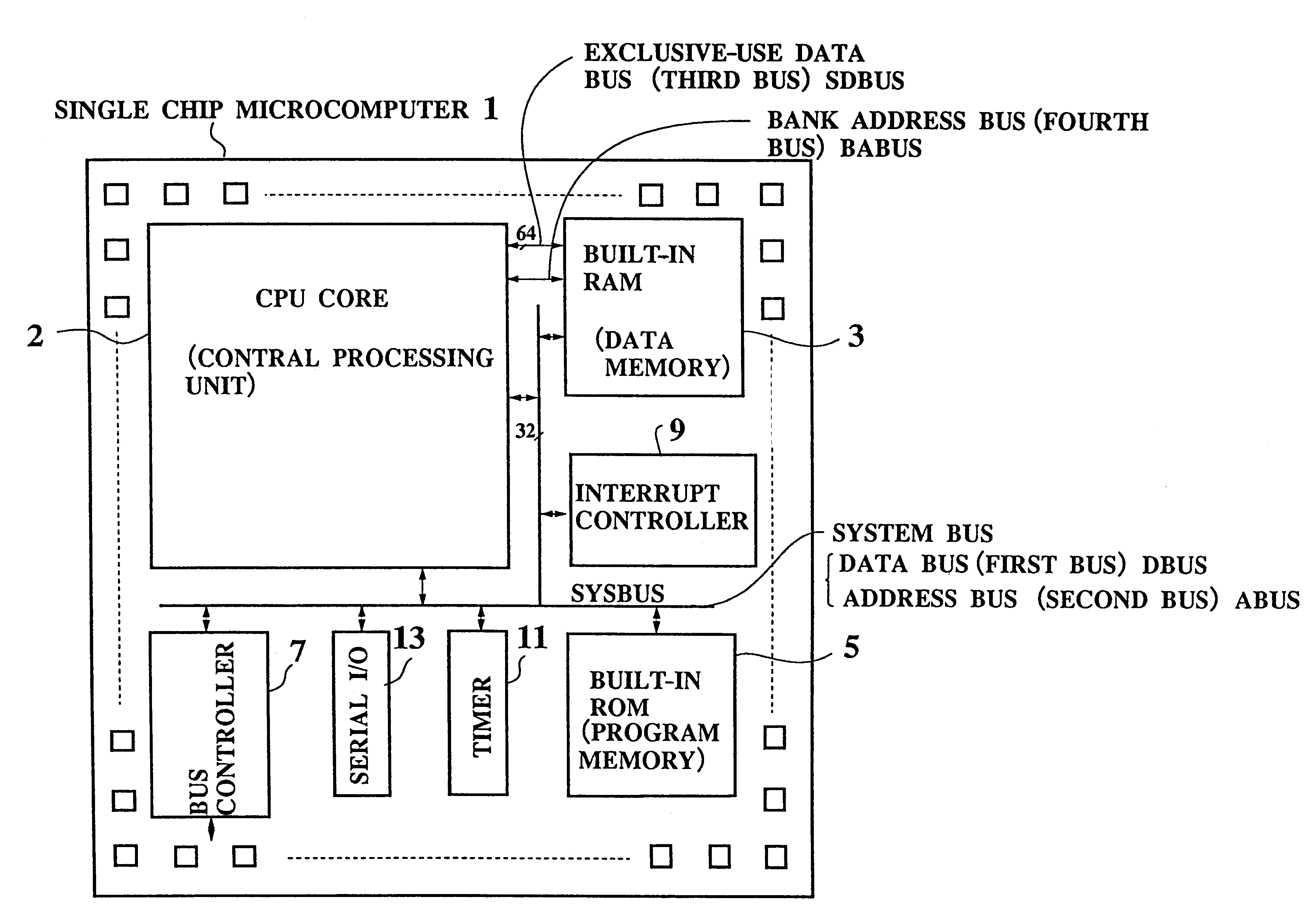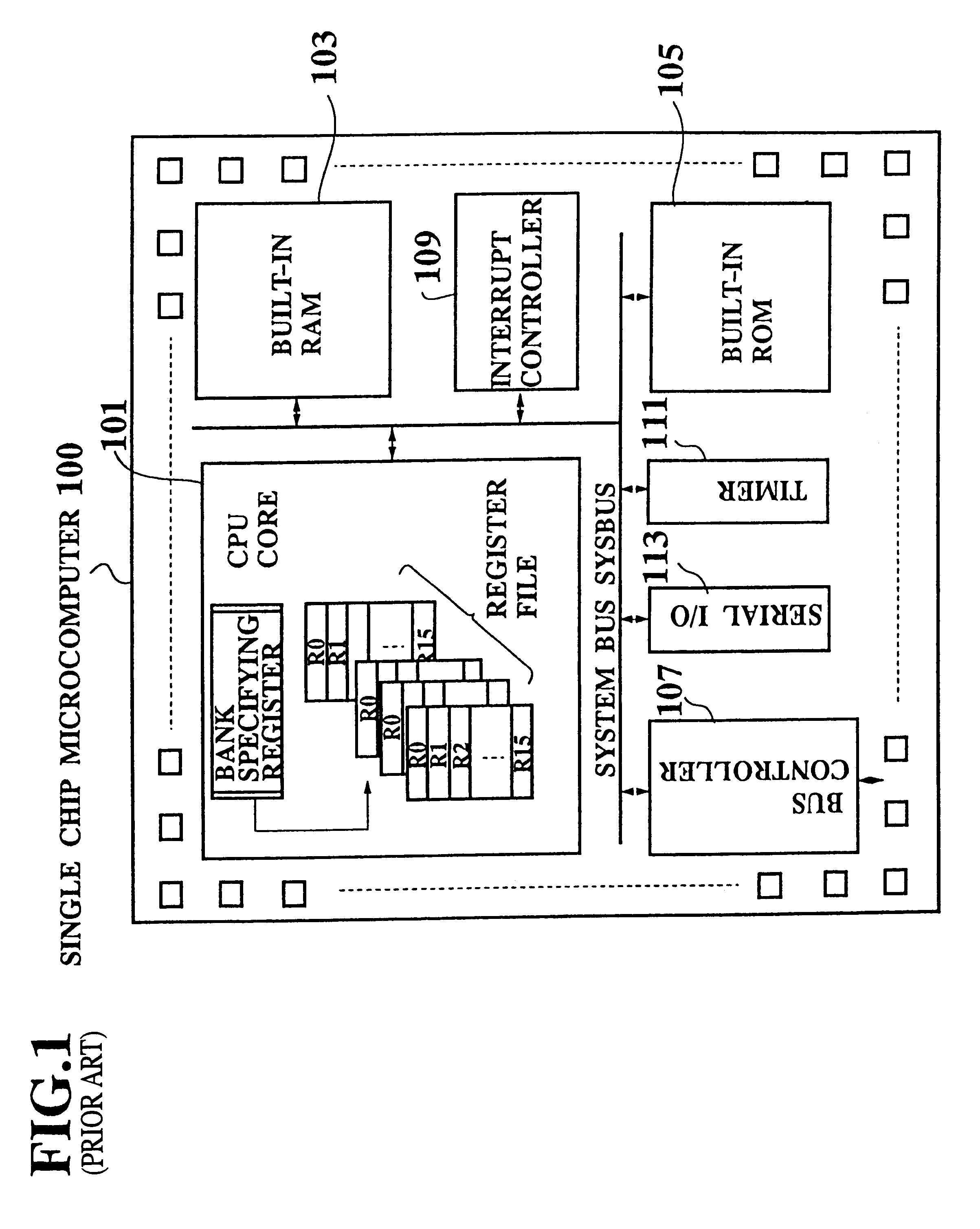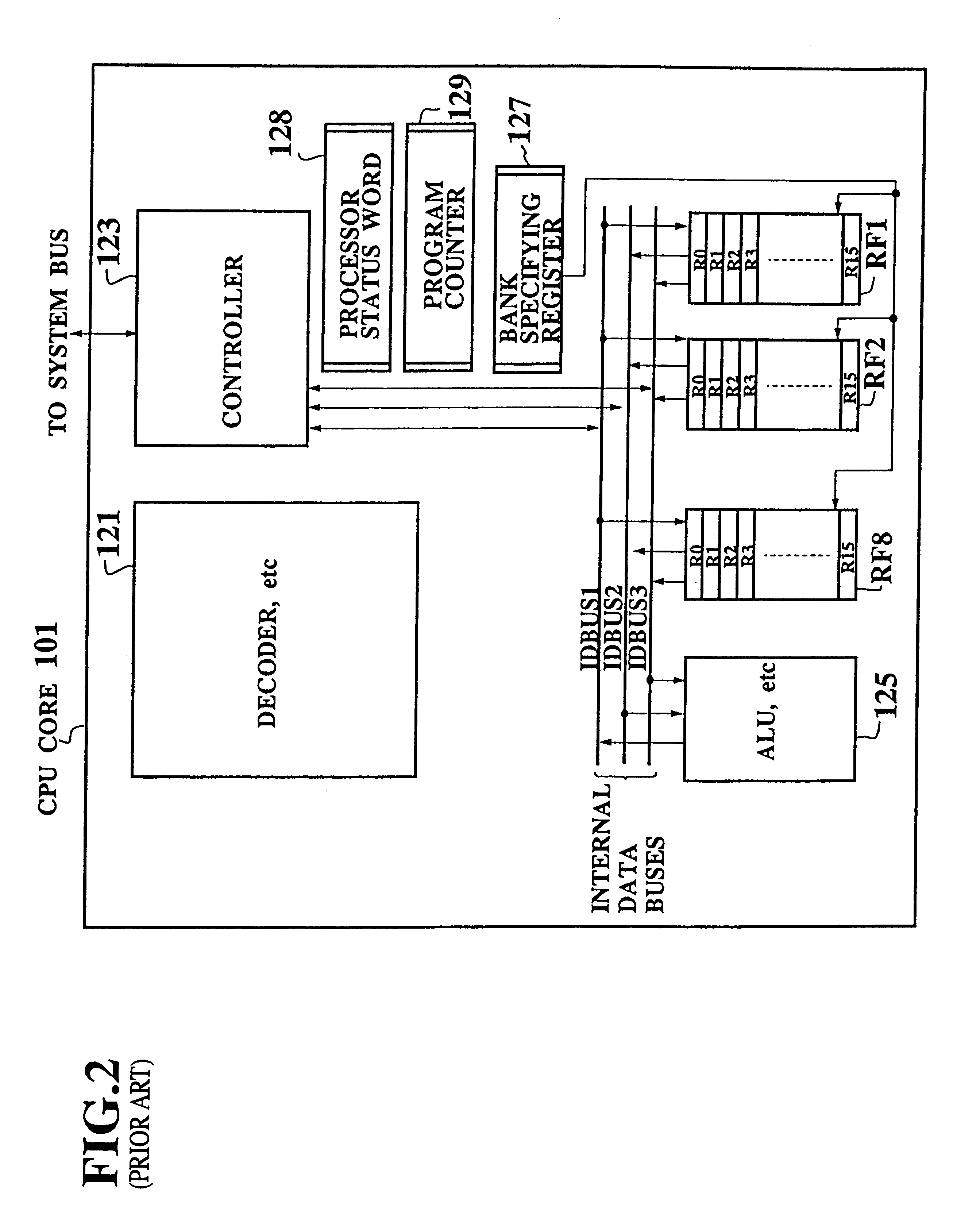Single chip microcomputer having a dedicated address bus and dedicated data bus for transferring register bank data to and from an on-line RAM
a single chip, register bank technology, applied in the field of single chip microcomputers, can solve the problems of reducing system performance, requiring a large space for multi-port general purpose register sets, and consuming a large amount of memory, so as to achieve efficient use of chip space and facilitate data transfer.
- Summary
- Abstract
- Description
- Claims
- Application Information
AI Technical Summary
Benefits of technology
Problems solved by technology
Method used
Image
Examples
Embodiment Construction
The embodiments of the invention will be explained with reference to the drawings.
FIG. 3 shows a single chip microcomputer according to the first embodiment of the invention.
The single chip microcomputer 1 comprises a CPU (central processing unit) core 2, a on-chip RAM (data memory) 3, a on-chip ROM (program memory) 5, a bus controller 7, an interrupt controller 9, a timer 11, and a serial I / O 13. These elements receive and transmit data through a 32-bit system bus SYSBUS (involving a 16-bit address bus ABUS,and a 16-bit data bus DBUS) disposed in the chip. Data to and from the outside of the chip are passed through a bus controller 7 and an I / O pad.
According to one of the features of the invention, the CPU core 2 is connected with the RAM 3 through exclusive-use buses, which include a 64-bit bidirectional data bus SDBUS and an 8-bit bank address bus BABUS for indicating an address in the RAM 3.
FIG. 4 shows the inside of the CPU core 2. The CPU core 2 includes a general purpose regi...
PUM
 Login to View More
Login to View More Abstract
Description
Claims
Application Information
 Login to View More
Login to View More - R&D
- Intellectual Property
- Life Sciences
- Materials
- Tech Scout
- Unparalleled Data Quality
- Higher Quality Content
- 60% Fewer Hallucinations
Browse by: Latest US Patents, China's latest patents, Technical Efficacy Thesaurus, Application Domain, Technology Topic, Popular Technical Reports.
© 2025 PatSnap. All rights reserved.Legal|Privacy policy|Modern Slavery Act Transparency Statement|Sitemap|About US| Contact US: help@patsnap.com



